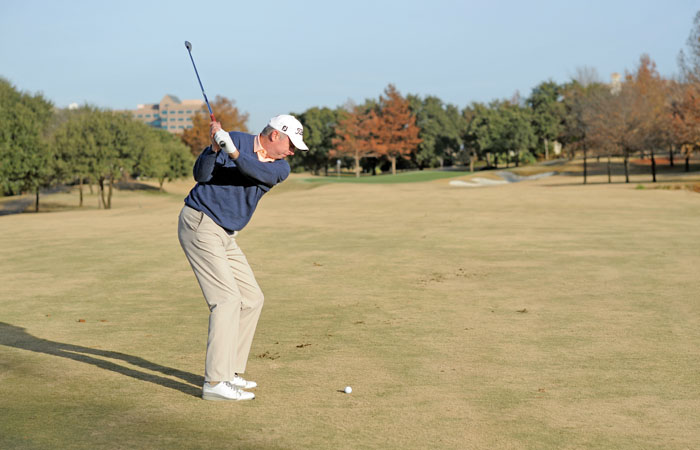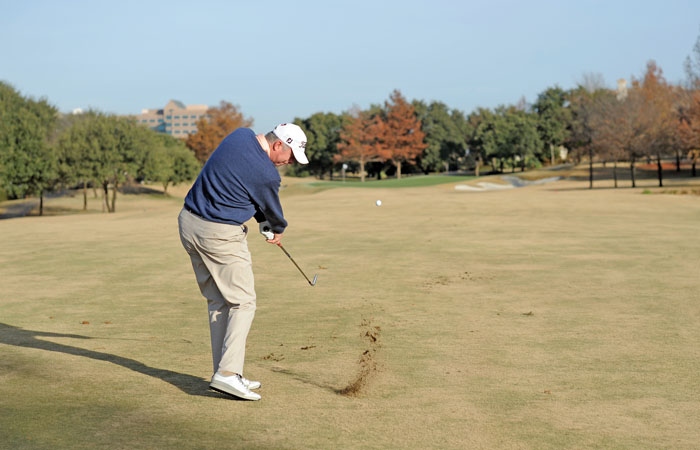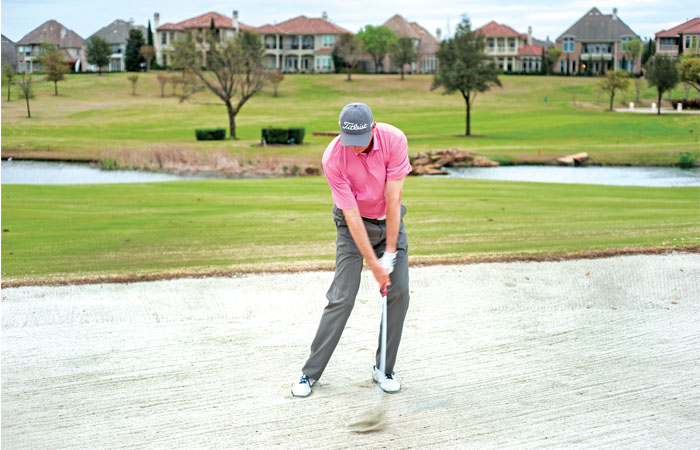Have you ever had a chip around the green where all you have to do is get it up-and-down to get a birdie and you end up skulling the ball across the green? I see far too many students make the mistake of skulling the ball across the green and thinking it is poor mechanics when; in reality, many times it is poor club choice. When you look at wedges, there will be a two-digit number on the wedge describing the degrees of bounce of the wedge.

How do you know what wedge to use when, according to the amount of bounce it has?
If you play on a course with firm turf or tight lies, the rule of thumb is to use a wedge with less bounce. As if you are using a wedge with a lot of bounce (double-digit bounce, 10 degree plus) on a tight or firm lie the clubhead will bounce into the ball, thus making you skull the ball across the green, thinking it was your mechanics that caused the skull when, in reality, it was you using a wedge with too much bounce for that lie. If you are a player who picks the ball off the ground, you will benefit from less bounce on your wedge, as well.
If you are playing on a course with softer conditions or more grass, you will benefit from using a club with more bounce. Also, if you are a player who has a steeper angle of attack with wedges, you will benefit from more bounce, as well.
The bounce of a wedge is the angle created between the leading edge of the wedge and the lowest point of the sole of the clubhead, as demonstrated in the picture above. This is the part of the club that hits through the ground or bounces as it contacts the golf ball. The higher the degree of bounce on a wedge, the higher the leading edge is off of the ground at address.

How do you use the bounce of your clubhead when you are in a situation where it is needed?
For starters, the more you lean your hands forward at address (toward your lead leg), the more the leading edge comes into play, making it harder to use the bounce of the wedge. Additionally, you want to limit the amount your hands lead the clubhead as you hit. If your hands lead a lot as you swing through impact, it will make it harder to use the bounce, as the leading edge will come into play more.
I like to have students practice using the bounce by hitting pitches on uphill slopes and focus on the back of the clubhead gliding up the hill rather than the leading edge digging into the hill, as shown in the two pictures. A simple swing thought to consider is feeling like your clubhead, shaft and hands all arrive to the ball at impact at the same time and your hands are not leading at impact.
YES

NO

If you look at my hands, shaft, arms and grip at impact, they are all in a straight line and hit the ball at the same time. Whereas if you look at the picture where I am using the leading edge instead of the bounce, my hands are leading the clubhead at impact, thus making my clubhead dig into the hill.